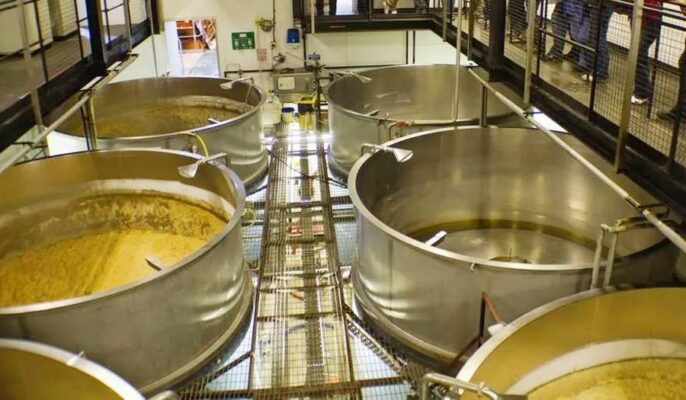Beer is one of the most beloved beverages around the world, with a wide variety of flavors and aromas thanks to a complex fermentation process. Both commercial and home breweries should be concerned about oxygen. Oxygen can destroy the long-term stability of beer flavor and clarity and cause various off-flavors. In this article, we take an in-depth look at the role of oxygen in fermentation and provide ways to control its effects.
What is oxygen? What is the role of oxygen?
Oxygen is a chemical element that is a reactive gas that is essential to life on Earth. Oxygen is also an important element in the beer fermentation process.
Oxygen is generally considered a life-supporting gas, but plays a different role in beer fermentation.
During fermentation, yeast cells consume sugar and produce alcohol and carbon dioxide. This process requires the presence of oxygen, which is necessary for yeast cells to grow and reproduce. Without enough oxygen, yeast cells cannot produce the enzymes and compounds needed for fermentation.
Too much oxygen can be detrimental to the fermentation process. Excess oxygen can spoil beer flavor and create off-flavors, which can lead to an unsatisfactory final product.

How to improve the efficiency of beer fermentation?
- Yeast type: Different types of yeast have different oxygen requirements.
- Temperature: The temperature of the fermentation environment also affects the amount of oxygen present. At lower temperatures, the solubility of oxygen in the wort is lower.
- Aeration technique: The method used for wort aeration (the process of introducing oxygen into the wort) also affects the oxygen levels during fermentation.
How to Control the Oxygen Level in Fermentation?
Plenty of yeast
Providing adequate amounts of healthy yeast at the start of fermentation reduces the need for cells to over-replicate, thereby minimizing oxygen demand during yeast growth.
Suitable fermentation vessel
Choose a fermentation vessel that limits oxygen exposure. Conical fermenters and closed tank systems can help maintain a controlled environment and reduce the chance of oxygen ingress.
Temperature control
Maintaining a constant temperature during fermentation helps control the oxygen levels in the wort. As mentioned earlier, lower temperatures may result in lower oxygen levels.
Purification equipment and packaging
Before transferring or packaging beer, purge equipment and containers with an inert gas such as carbon dioxide. This displaces oxygen, creating an environment that helps maintain beer quality.
Proper Wort Aeration
Proper wort aeration is essential to ensure that the yeast cells have enough oxygen for fermentation. Brewers can aerate wort using some methods, including shaking the wort, using oxygen stones, or using pure oxygen.
Use oxygen scavengers
Certain materials, such as oxygen caps and bottle liners, can help remove residual oxygen from packaging materials.

Tips for Avoiding Oxygen Inhalation
- Cut cold side transfers and purge lines and target containers when transferring
- When transferring, if possible, do it by pushing it from one container to another with CO2, not by pumping or gravity.
- All joints and fittings in the transfer line must be tight and the line itself must be designed to avoid excessive beer flow and turbulence
- CO2 should be used instead of air as top pressure and back pressure
- Beer should enter the receiving tank at a low speed to prevent turbulence
- Extensive scrubbing of recovered (residual) beer with CO2 gas before reprocessing
- Adding the correct dose of antioxidants to compensate for processing imperfections and replace careful process control
- Regular inspection and cleaning of filling valves is essential
In conclusion
Oxygen control is important at different stages of brewing. It affects yeast health and productivity as well as oxidative formation and degradation of flavor compounds, affecting beer color and shelf life. Careful monitoring of oxygen levels and taking steps to control them are critical to quality control during beer production. By understanding the factors that affect oxygen levels and using technology to control them, brewers can produce consistent, great-tasting beer that people around the world love.




